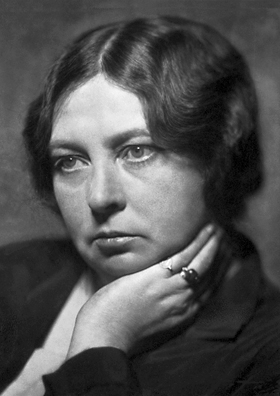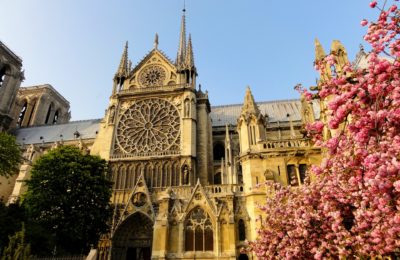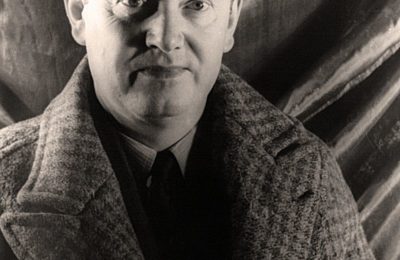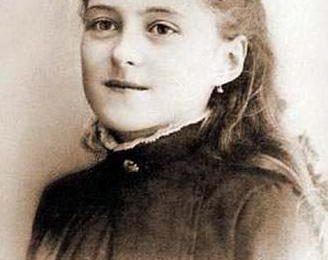Yesterday, I was thinking about The Book, Kristin Lavransdatter by Sigrid Undset (b. 1882- d. 1949), which I wrote about in The Marian Room in November, link. That post was an attempt to sum up the beauty of The Book; and notes why, if you are busy with work, or with your family, it is best to keep it up on the bookshelf. Once The Book is removed from its shelf, there is no telling what duties will be neglected, for it simply cannot be put down; but you might have more control of your reading habits than I, so I should not project myself onto you.
But, to what made me think about Her, The Book. I came across an essay about Her which is quite good; and since I have had several readers of this blog tell me that they have taken up The Book since the November post, I thought I would post portions of the essay today.
The essay was written by David Warren, and may be read in its entirety here. In the first part of the piecce, Warren lauds the first translation of The Book, and I agree with him on this. I tried to read the new Penguin translation, and it did not have the same “feel” as the first one. Warren notes:
There are two translations of Sigrid Undset’s remarkable trilogy, Kristin Lavransdatter. That by Archer and Scott came out promptly after the Norwegian originals in the early 1920s. Undset had lived in London, spoke English fluently, and knew the translators. She would have been consulted on fine points. I am told by a native Norwegian that the (mildly) archaic English these translators used nicely echoes effects in the sentences of an authoress who was steeped in Old Norse, and intimately familiar with the old sagas.
The other, commissioned by Penguin Books three generations later, is by Tiina Nunnally, award-winning translator of several dozen (mildly) fashionable Scandihoovian tomes. I’m sure it is quite accurate, but I put it down. I’d read the older version years ago, but did not return to it from nostalgia; at first the new version seemed a breath of fresh air. But Nunnally’s very “modern” English changed the atmosphere. It obscured nothing — passages touching on physical sex were if anything belaboured and spiced up — but everything seemed wrapped in cellophane. The protagonist Kristin herself becomes more “modern,” too, where in the older version she had struck me as “timeless”; and rather more immediate.
I dwell on this, for in articles and interviews, Nunnally sneered at the old translation, insinuating that it was grinding, stilted, anachronistic, loose, and bowdlerizing. She is herself a creature of “Scandinavian Studies” in current academia, who knows how to alienate readers from a rival text, by telling them they will be alienated.
For as long as I can remember, readers have been trained to associate literary archaism with the stuffy and Victorian. Shielded thus, they may not realize that they are learning to avoid a whole dimension of poetry and play in language. Poets, and all other imaginative writers, have been consciously employing archaisms in English, and I should think all other languages, going back at least to Hesiod and Homer. The King James Version was loaded with archaisms, even for its day; Shakespeare uses them not only evocatively in his Histories, but everywhere for colour, and in juxtaposition with his neologisms to increase the shock.
In fairy tales, this “once upon a time” has always delighted children. Novelists, and especially historical novelists, need archaic means to apprise readers of location, in their passage-making through time. Archaisms may paradoxically subvert anachronism, by constantly yet subtly reminding the reader that he is a long way from home.
Get over this adolescent prejudice against archaism, and an ocean of literary experience opens to you. Among other things, you will learn to distinguish one kind of archaism from another, as one kind of sea from another should be recognized by a yachtsman.
But more: a particular style of language is among the means by which an accomplished novelist breaks the reader in. There are many other ways: for instance by showering us with proper nouns through the opening pages, to slow us down, and make us work on the family trees, or mentally squint over local geography. I would almost say that the first thirty pages of any good novel will be devoted to shaking off unwanted readers; or if they continue, beating them into shape. We are on a voyage, and the sooner the passengers get their sea legs, the better life will be all round.
*
This is peculiarly so for Sigrid Undset. And the paradox here, in Kristin Lavransdatter, is that we must become fully immersed in the 14th century — mediaeval daily life in the interior of Norway — to begin recognizing the timelessness of her characters and their situations. She is using the form of the historical novel to an extremely useful purpose: to slit through our “modern” superficiality; to take us out of ourselves in order to look about, in the strangeness of a strange new world, then to find ourselves again, in the costumes. This is Tolkien, for adults.
Yes, The Book is, as Warren writes, “Tolkien, for adults.”
So, do delve in, and the language, setting, and dialogue will grow familiar until you no longer notice it.
But, back to Warren’s essay: at the end, he says a bit about the end of The Book, he writes:
The book is far from painful to read. As I’ve said, the “archaic” earlier translation will only be in the reader’s face for thirty pages or so, and the discovery that he is now at home in it will come as a pleasant surprise. As in the reading of any fine saga embracing generations, he will soon feel almost part of the family, emotionally invested in its fate.
There is a moment — and O Lord is Sigrid Undset the mistress of moments — when our heroine is “leaving home” for what will be the last time. This is the home she left by marriage, and to which she had returned for refuge with her children. Those children have grown, and scattered. A dark cloud of plague is descending upon Norway, but this is not so apparent yet. Kristin Lavransdatter is entering old age, but still has her health. She is setting off on pilgrimage to Trondheim — the grand mediaeval cathedral of Niðarós, shrine of Olav and tomb of kings, capital and spiritual seat of pre-Reformation Norway (still standing in its Gothic stone, by the Arctic Circle).
On the first leg, she is accompanied by her son, Gaute, now master of the manor and its future, carrying her “wallets” up the rise on his horse. She will not ride, being Kristin. They must part, Gaute in an explosion of tears, for the mother he will never see again; Kristin in mysterious containment. At the height of land, she looks back over the valley that has been her life, spotting in the far distance, her home. As Undset puts it, she is torn back, for one last home-sick glance; but also torn forward, by something very much like a home-sickness for heaven:
“It seemed as if these yearnings burst her heart in sunder — they ran hither and thither like streams of blood, seeking out ways to all places in the wide-stretched land where she had lived, to all the sons she had wandering in the world, to all her dead beneath the moulds.”
The story is not yet over; but I will leave it there. It is more than a thousand pages, and I have not even mentioned beloved Brother Edvin, or so many other characters brought to vivid life. Yes, it is an unambiguously Catholic novel, though Undset was not yet a Catholic when she wrote it. Yes, it won the Nobel Prize, ninety-something years ago. Yes, there are many other works of Undset’s worth reading, including her extraordinary biography of Catherine of Siena, and many other penetrating essays and stories, should there be world enough and time; but this trilogy is all of a piece.
One might read, I suppose, any sort of novel; but this is one of those novels that reads you.
Yes, as Warren says, “this is one of those novels that reads you.”
May you have a good day, and weekend; and I do promise that I will not pick up The Book today…..though reading the last several pages could do no harm, eh? 😉
~SCF
~Image: the Norwegian writer, Sigrid Undset, 1928, source.






